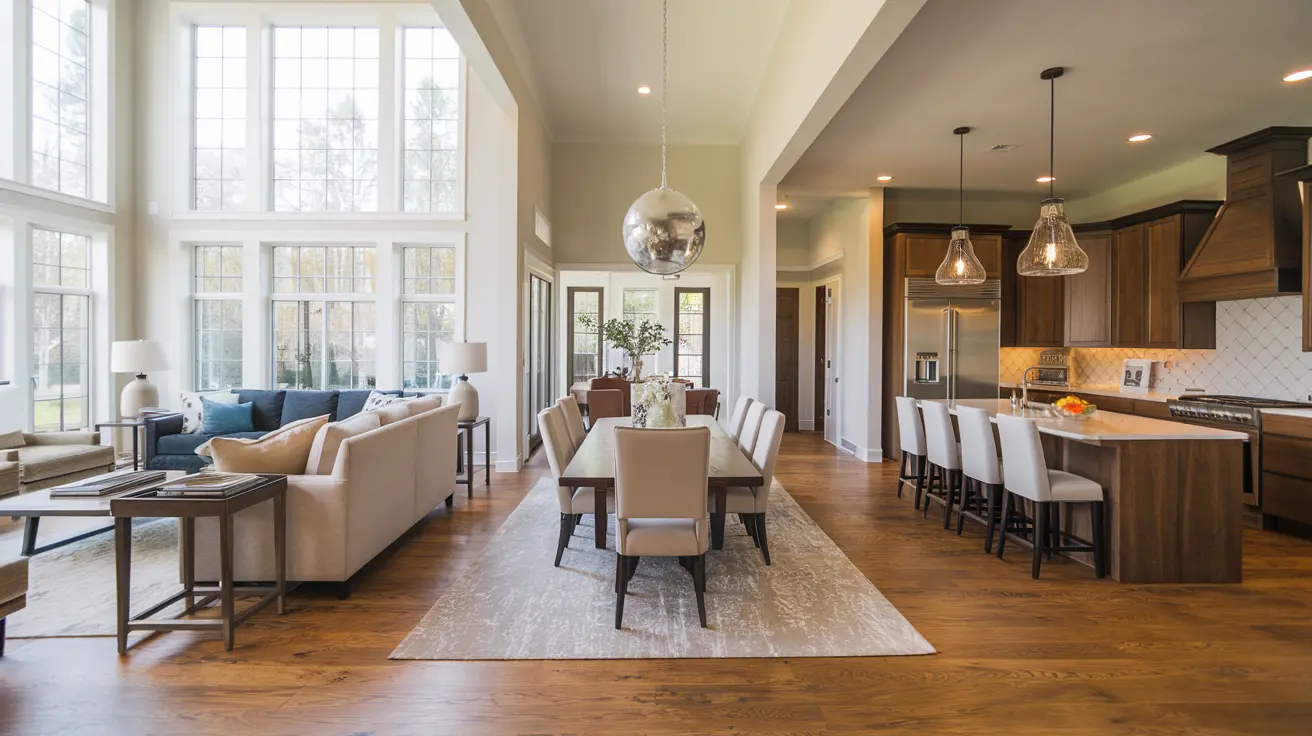Sustainable Living: Innovative Home Remodeling for an Eco-Friendly Lifestyle

The transition towards sustainable living through innovative home remodeling holds significant potential for reducing our environmental impact while enhancing residential efficiency. By integrating energy-efficient upgrades such as highly-insulative materials, triple-glazed windows, and advanced smart lighting systems, homeowners can achieve substantial reductions in energy consumption. Moreover, the utilization of eco-friendly materials, including reclaimed wood and rapidly renewable bamboo, combined with the adoption of modular construction techniques and low-VOC finishes, offers a multifaceted approach to sustainable development. As we explore these methodologies, we uncover the transformative benefits that align ecological responsibility with modern living comforts.
Energy-Efficient Upgrades in Home Remodeling
Investing in energy-efficient upgrades is pivotal for homeowners aiming to reduce their environmental footprint and enhance the sustainability of their living spaces. One of the most impactful modifications involves upgrading insulation. Utilizing advanced materials such as spray foam or rigid foam boards can significantly minimize heat transfer, reducing energy consumption for heating and cooling.
Additionally, installing high-performance windows with low-emissivity (Low-E) coatings and argon gas fills further enhances thermal efficiency by reflecting infrared heat and improving insulation.
Another essential upgrade is the integration of energy-efficient HVAC systems. Modern units, such as those with variable speed technology, offer superior regulation of temperature while consuming less energy. These systems can be paired with programmable thermostats, enabling precise control over heating and cooling schedules, which optimizes energy use.
Lighting represents another critical area for improvement. Transitioning to LED lighting, which consumes up to 75% less energy and lasts significantly longer than incandescent bulbs, can yield substantial energy savings. Furthermore, incorporating smart lighting systems allows for automated control, ensuring lights are used only when necessary.
Sustainable Materials and Practices
While energy-efficient upgrades significantly contribute to reducing a home’s environmental impact, the choice of materials and construction practices is equally important in fostering an eco-friendly lifestyle. Opting for sustainable materials such as reclaimed wood, bamboo, and recycled metal can substantially reduce the carbon footprint of a remodeling project. Reclaimed wood, sourced from old structures, not only minimizes deforestation but also adds unique character.
Bamboo, renowned for its rapid growth rate, serves as a renewable alternative to traditional hardwoods. Recycled metal, often derived from industrial scrap, reduces the need for virgin material extraction, thereby conserving natural resources.
Incorporating low-VOC (volatile organic compounds) paints and finishes is another crucial practice. These products emit fewer harmful chemicals, improving indoor air quality and promoting occupant health. Additionally, utilizing insulation made from recycled denim or cellulose, derived from post-consumer paper products, enhances energy efficiency without depleting new resources.
Construction practices also play a pivotal role. Implementing modular construction techniques reduces waste by allowing precise material use and facilitating future disassembly and reuse. Adopting a holistic approach that integrates sustainable materials and responsible practices not only supports environmental stewardship but also cultivates a sense of community and shared responsibility towards a greener future.
Conclusion
The transformative potential of sustainable home remodeling is profound, yet the full impact remains to be seen. Advanced insulation, high-performance windows, and smart lighting systems represent just the beginning. The integration of reclaimed wood, bamboo, modular construction, and low-VOC finishes further propels this movement. As these innovative practices gain traction, one question lingers: How radically will the ecological footprint of residential living be reduced? The answer, poised on the horizon, promises a paradigm shift in eco-friendly living.
Read More:
Green Living: Eco-Friendly Home Remodeling Ideas for a Sustainable Future
Revolutionize Your Home With These Sustainable Remodeling Tips
Post navigation
RECENT POSTS
categories
- Testimonials
- Kitchen Remodeling
- Bathroom Remodeling
- Home Addition
- Agoura Hills
- Westlake Village
- Calabasas
- Home Remodeling
- Newbury Park
- Moorpark
- Westlake Village
- Oak Park
- Westlake Village
- Newbury Park
- Oak Park
- Bathroom remodel
- Westlake Village
- Newbury Park
- Moorpark
- Oak Park
- Kitchen Remodel
- Moorpark
- Newbury Park
- Oak Park
- Westlake Village
- Moorpark
- Room Addition
- Calabasas
- Woodland Hills
- Custom Kitchen Cabinets
- Custom Bathroom Cabinets
- Bathroom and Kitchen Design
- Bathroom Vanities
- Garage Convesion to ADU
- Full Kitchen Remodel
- Full Bathroom Remodel
- Thousand Oaks
- Hidden Hills
- garage conversion to adu
- garage conversion to adu service
- Top-sights
Archives
2024
- October (12)
- September (12)
- August (27)
- July (39)
- June (23)
- May (35)
- April (23)
- March (23)
- February (20)
- January (21)
2023
- December (28)
- November (24)
- October (26)
- September (4)
- July (2)
- June (13)
- May (17)
- April (8)
- March (34)
- February (8)
- January (5)
2022
- December (4)
- October (27)
- September (24)
- August (20)
- July (20)
- June (20)
- May (20)
- April (25)
- March (20)
2021
2020
- December (82)
- November (67)
- October (13)
- September (14)
- August (4)
- July (4)
- May (8)
- April (4)
- February (20)
